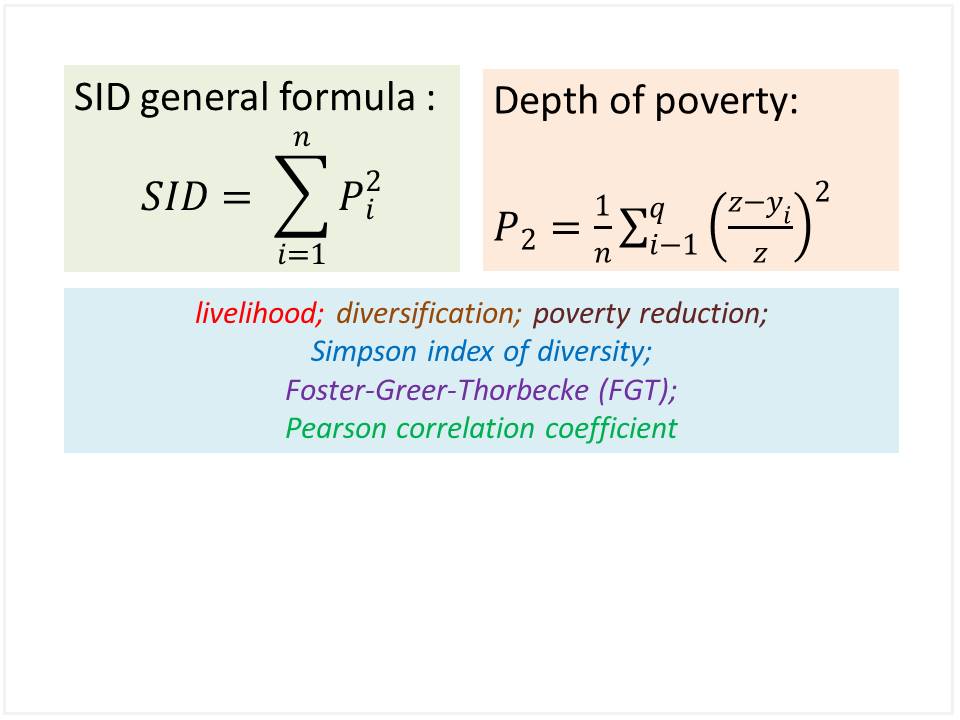Title
Livelihood Diversification Strategies as a Means to Poverty Reduction among Rural Farming Households in Adamawa State, Nigeria
Authors
Dia Y.Z.,*a Jongur A.A.U.b and Onu J.I.b
aDepartment of Agricultural Extension, Adamawa State College of Agriculture, P.M.B. 2088, Ganye, Nigeria.
bDepartment of Agricultural Economics and Extension, Modibbo Adama University Yola, P.M.B. 2076 Yola, Adamawa State, Nigeria.
*Corresponding author E-mail address: yahayadia6@gmail.com (Dia Y.Z.)
Article History
Publication details: Received: 19th January 2022; Revised: 08th March 2022; Accepted: 08th March 2022; Published: 22nd March 2022
Cite this article
Dia Y.Z.; Jongur A.A.U.; Onu J.I. Livelihood Diversification Strategies as a Means to Poverty Reduction among Rural Farming Households in Adamawa State, Nigeria. Green Rep., 2022, 3(7), 39-48.

Abstract
The study examined livelihood diversification strategies as a means to poverty reduction among rural farming households in Adamawa State, Nigeria. Specifically, the research objectives were to: describe the socio-economic characteristics of the respondents, identify the livelihood activities of the respondents, assess the level of diversification of livelihood activities of the respondents and determine the poverty status of the respondents. Data used for the studies were generated from 305 respondents, who were selected using multi-stage random sampling technique. The analytical tools used were descriptive and inferential statistics such as Simpson index of diversity and Foster-Greer-Thorbecke (FGT). Hypothesis was tested using Pearson correlation coefficient to measure a relationship between poverty status and livelihood activities. Findings of the study revealed that, the majority (89.18%) of rural farming household heads were men, married (85.90%) with the mean age of 44.77 years; 79.69% had one for of formal education or the other, 76.72% had farm size between 1 - 3 hectares, 38.36% had farming experience between 15 – 20 years with mean household size of 8 people, while majority (84.92%) of the respondents do not have access to credit. The distribution of respondents by nature of likelihood activities revealed that 95.08% were involved in arable cropping 50.49% were into livestock sales, 18.69% were civil servants and 69.4% were involved in one form of non-farm activities or the other. On the extent of livelihood diversification, 54.75% of the farming household had low diversification, 42.30% of farming households moderately diversified and only 2.95% of the respondents were highly diversified. Respondents’ distribution by poverty status showed that, poverty incidence (Po), poverty depth (P1) and poverty severity (P2) were 0.38, 0.17 and 0.10 respectively. The result of hypothesis test indicated that, the variables are positively correlated (r = 0.540) and statistically significant at P<0.01 level, imply that increase in livelihood activities increase the likelihood of being non-poor and vice versa. Based on findings of the study it was recommended that: Skills acquisition centers should be establish for rural farming households, sufficient resources should be provided to develop infrastructure, there should be access to credit facilities, and this would help to reduce poverty.
Keywords
livelihood; diversification; poverty reduction; Simpson index of diversity; Foster-Greer-Thorbecke (FGT); Pearson correlation coefficient